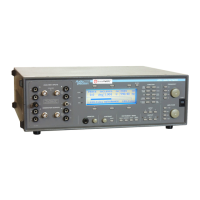Whenever an A/D or D/A is used in a measurement instrument to
translate from one domain (analog or digital) to the other, there is a
penalty in sound quality. Therefore, it is most useful to test any device
inputs or outputs directly in their own domain.
One fundamental difference between analog and digital domains is
that a pair of wires (one signal and one ground) can carry only one
channel in the analog domain. In the digital domain, a pair of wires
can carry many channels of sound. For an analog stereo signal, two
cable connections must be made. For a digital stereo signal, only one
cable connection is necessary.
Balanced vs. Unbalanced
Another major division exists between balanced and unbalanced
connections. Most consumer devices use unbalanced connections.
Most professional devices use balanced connections.
Unbalanced connections only require two wires: one to carry the signal
and one to carry the ground. Balanced connections require three
wires: two to carry the signal and one to carry the ground.
Balanced connections are generally used in professional applications
because of their higher immunity to interference and noise.
Unbalanced connections are generally used in consumer applications
because they are less expensive.
The most common unbalanced connectors are the RCA connector, the
BNC connector, and the 1/4" Phone connector.
The most common balanced connector is the XLR connector. XLR
connections are almost always balanced, although sometimes the XLR
connector can be used in balanced or unbalanced configurations.
& For Connector
Panel options
information, see page
1-8.
& For input and
output cable
considerations, see
page 3-30.
2 Getting Started
Getting Started Concepts and Terminology
ATS-1 Access User's Manual 2-3

